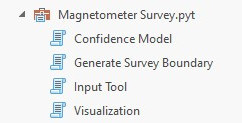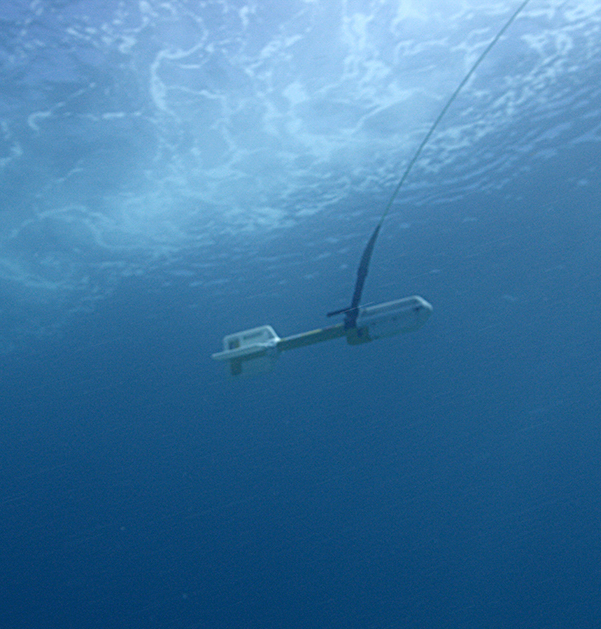MagTool
Download MagTool V1(released 27 March 2014) here


MagTool V1 Overview
Currently there are four individual utilities within this Python Toolbox. They are described as follows:
1.Input Tool: Imports raw data file into an ArcGIS file geodatabase via a defined feature class schema. Plots the sample point features (rawGamma) which are used to generate tracklines (surveyLines). Establishes attribute table values for each sample to include total field magnetic value, altitude, date, time, and survey run line name.
2.Generate Survey Boundary: Uses input feature geometry to produce convex hull and dissolved buffer polygons encompassing actual magnetic survey data tracklines or points. Used downstream as an analysis mask.
3.Visualization: Runs a spatial gradient computation over the total field channel resulting in a filtered output. Interpolates and contours the total field and spatial gradient channels according to user-selected interpolation method and user-defined contour intervals. Output feature class object names are derivative of input parameters; this script can be run multiple times with altered parameters without overwriting individual outputs. Results from this tool can be used for magnetic anomaly identification.
4.Confidence Model: Performs a series of geospatial analyses to determine theoretical levels of survey coverage based on raw data point geometry, sensor altitude, sensor noise, and user-defined magnetic moment values. Outputs include raster surfaces to visualize and statistically describe coverage levels per input parameters.
Notes on utilization
Refer to XML files provided in the compressed archive via the link above. These contain descriptions and information pertaining to input parameters, usage, and function. Scripts were developed within ArcGIS Version 10.x, prior to the release of ArcGIS Pro. Though V1 is functional on ArcGIS Pro, new Pro features were integrated into the V2 release which greatly enhances their function. V1 requires Spatial Analyst and 3D Analyst extensions.
